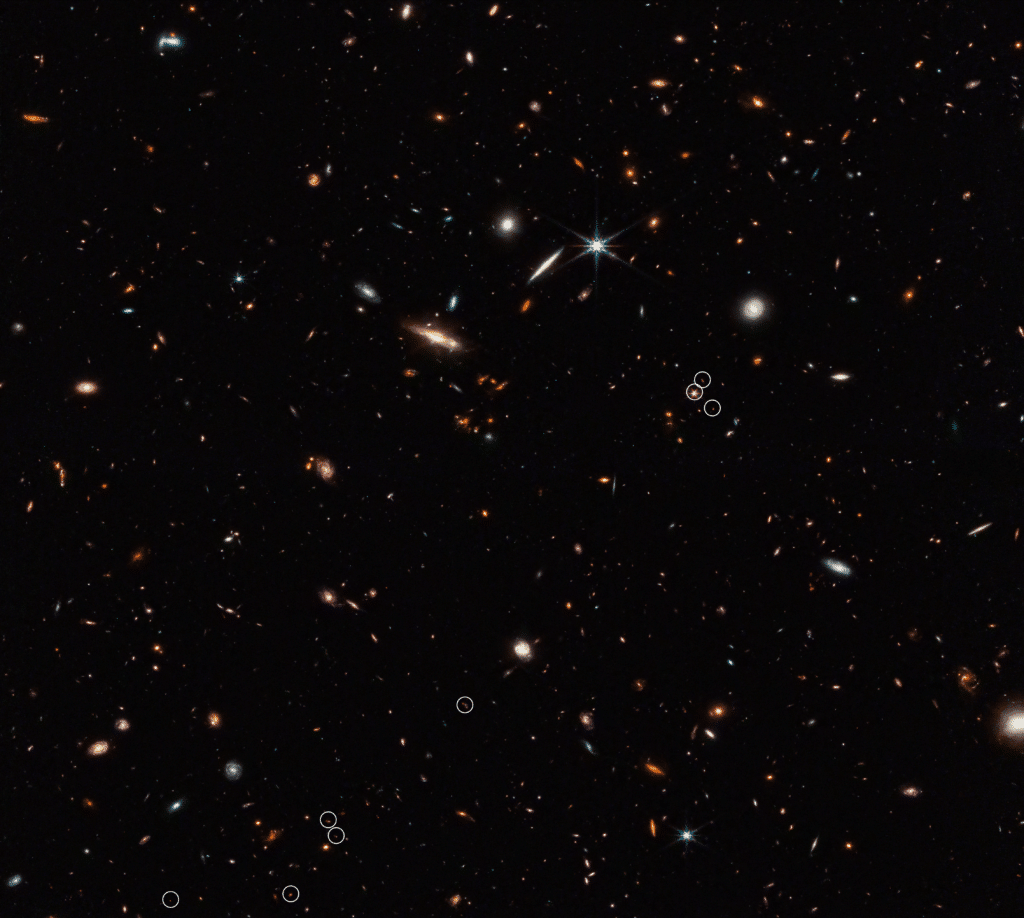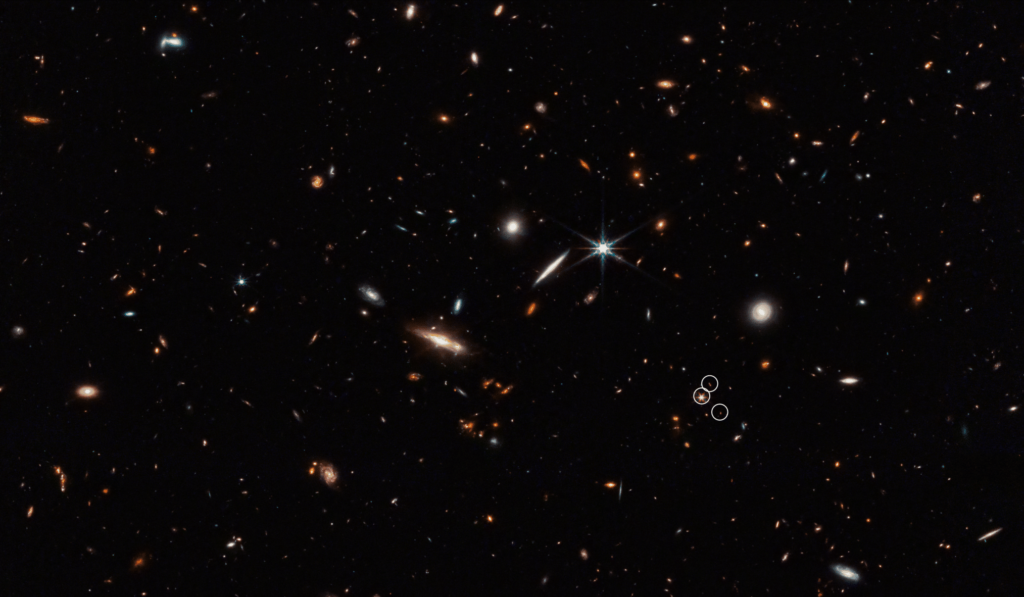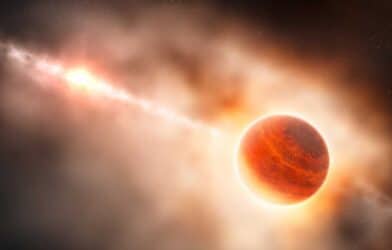Astronomers Make Startling Discovery Shedding Light on Cosmic Web Formation and Supermassive Black Holes
In a groundbreaking finding, astronomers utilizing NASA’s James Webb Space Telescope (JWST) have uncovered a remarkable thread-like arrangement of 10 galaxies that existed a mere 830 million years after the big bang. This extraordinary 3 million light-year-long structure, anchored by a brilliant quasar housing a supermassive black hole, holds the potential to evolve into a massive cluster of galaxies resembling the well-known Coma Cluster in our nearby universe.
Expressing surprise at the discovery, team member Xiaohui Fan of the University of Arizona notes in a statement: “I expected to find something, but I didn’t expect such a long, distinctly thin structure.” This particular filament, associated with a distant quasar, stands as one of the earliest filamentary structures ever detected.
The findings stem from the ASPIRE project (A SPectroscopic survey of biased halos In the Reionization Era), with its primary objective centered on investigating the cosmic environments of the earliest black holes. ASPIRE aims to enhance our understanding of the emergence of massive black holes and their integration into the prevailing narrative of cosmic structure formation.
“The last two decades of cosmology research have given us a robust understanding of how the cosmic web forms and evolves,” says Joseph Hennawi of the University of California, Santa Barbara, another member of the team. “ASPIRE aims to understand how to incorporate the emergence of the earliest massive black holes into our current story of the formation of cosmic structure.”

The JWST study also delves into the properties of eight quasars in the young universe, confirming the presence of central black holes ranging from 600 million to 2 billion times the mass of our Sun. The researchers are actively seeking evidence to unravel the mysteries behind the rapid growth of these supermassive black holes.
“To form these supermassive black holes in such a short time, two criteria must be satisfied. First, you need to start growing from a massive ‘seed’ black hole,” explains Feige Wang of the University of Arizona. “Second, even if this seed starts with a mass equivalent to a thousand Suns, it still needs to accrete a million times more matter at the maximum possible rate for its entire lifetime.”
The observations made by the JWST provide critical insights into the assembly of black holes. They reveal that these black holes inhabit massive, youthful galaxies that serve as fuel reservoirs for their rapid growth. Additionally, the telescope’s observations provide the most compelling evidence to date on how early supermassive black holes potentially regulate star formation in their galaxies.
“Strong winds from black holes can suppress the formation of stars in the host galaxy. Such winds have been observed in the nearby universe but have never been directly observed in the Epoch of Reionization,” says Jinyi Yang, who led the study of black holes with ASPIRE. “The scale of the wind is related to the structure of the quasar. In the Webb observations, we are seeing that such winds existed in the early universe.”
The James Webb Space Telescope continues to unravel the mysteries of our cosmos, providing unprecedented insights into the formation of galaxies and the role of supermassive black holes in shaping the universe as we know it.












